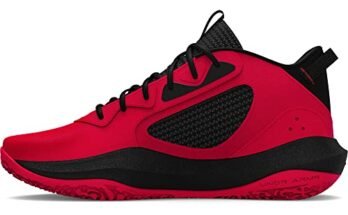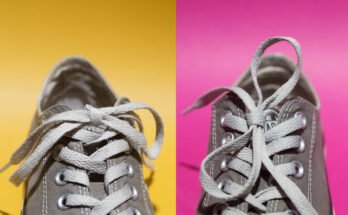To choose the right kind of shoes, consider your foot size, arch type, and the activity you’ll be doing. The right shoes will offer comfort, support, and protection for your feet, helping to prevent injuries and discomfort.
Finding the perfect pair of shoes can be a game-changer for your comfort and performance. Whether you’re an athlete, a professional, or simply someone who enjoys a good walk, having the right footwear is crucial. With the wide variety of options available, it’s important to know how to choose the right kind of shoes to suit your needs.
From running shoes to dress shoes, each type serves a specific purpose. Understanding your foot type and the activity you’ll be engaging in can help you make an informed decision. Let’s explore the essential factors to consider when selecting the perfect pair of shoes.
Consider Your Foot Type
Know Your Foot Arch
There are three main types of foot arches: low, medium, and high. To determine your foot arch, perform a wet test by stepping on a piece of paper and analyzing the imprint.
Understand Your Foot Pronation
Foot pronation refers to how your foot rolls inward when you walk or run. There are three types: neutral, overpronation, and underpronation. To identify your pronation, observe the wear patterns on your old shoes.

Credit: www.wikihow.com
Determine The Purpose Of The Shoes
When it comes to choosing the right kind of shoes, one of the most crucial steps is to determine the purpose for which the shoes will be used. Different activities require different types of footwear, and wearing the right shoes for the right activity is essential for comfort, support, and injury prevention.
Casual Wear
For casual wear, comfort and style are key. Versatile shoes that can be paired with various outfits are ideal. Look for sneakers, loafers, or casual boots that provide cushioning and support for everyday activities.
Running
Running shoes should offer cushioning, support, and stability. Consider your running gait and the surface on which you’ll be running. Seek out shoes with breathable materials and good traction to enhance performance and reduce the risk of injury.
Hiking
When hiking, choose shoes designed for rough terrain and long distances. Look for ankle support, waterproofing, and durable outsoles. Hiking boots or trail shoes with good grip are essential for stability and safety on uneven paths.
Athletic Training
For athletic training, such as cross-training or weightlifting, opt for shoes that provide stability and support for lateral movements. Cross-training shoes or weightlifting shoes with firm soles and ankle support are ideal for these activities.
Check For Proper Fit
When it comes to choosing the right kind of shoes, ensuring a proper fit is crucial. Ill-fitting shoes can lead to discomfort, pain, and even long-term foot problems. To make sure you’re getting the right fit, pay attention to the following key factors.
Measure Your Feet
Start by measuring your feet to determine the correct shoe size. Feet can change in size and shape over time, so it’s important to get an accurate measurement each time you shop for shoes.
Try On Shoes At The End Of The Day
Feet tend to swell throughout the day, so it’s best to try on shoes in the evening when they are at their largest. This will ensure that the shoes will still be comfortable even when your feet are slightly swollen.
Make Sure There Is Enough Space For Toes
When trying on shoes, ensure that there is enough room for your toes to wiggle. Your toes should not feel cramped or squished, as this can lead to discomfort and even foot problems over time.
Ensure Heel Is Snug
Check that the heel of the shoe fits snugly against your foot without slipping. A loose heel can cause blisters and discomfort, while a too-tight heel can lead to pain and potential injury.

Credit: www.wikihow.com
Consider Shoe Materials
When choosing the right kind of shoes, it’s important to consider the materials. Opt for leather or canvas for durability and breathability, and avoid synthetic materials that may cause discomfort. Quality materials ensure both style and comfort for your footwear.
Leather
Leather shoes offer durability and a classic look. They mold to the shape of your foot.
Synthetics
Synthetic shoes are lightweight and often more affordable than leather. They are easy to clean.
Mesh
Mesh shoes provide breathability, making them ideal for active pursuits. They are comfortable for long periods.
Canvas
Canvas shoes are casual and flexible. They are great for everyday wear and offer a wide range of styles.
Think About Shoe Features
Selecting the right shoes involves considering various features such as arch support, cushioning, and material. It’s important to think about the type of activities you’ll be doing while wearing the shoes, as this will guide you in choosing the most suitable options for your needs.
When it comes to choosing the right kind of shoes, it’s not just about the style or color. You should also pay attention to the shoe features that will provide the necessary comfort and support for your feet. Here are some important features to consider:Cushioning
Cushioning is an important feature to consider when selecting shoes. It refers to the padding and support provided by the midsole of the shoe. Shoes with good cushioning help to absorb shock and reduce pressure on your feet. This feature is particularly important for those who spend a lot of time on their feet or engage in high-impact activities like running or jumping.Support
Support is another key feature to consider when selecting shoes. It refers to the structure and design of the shoe that provides support to your feet and helps to prevent injuries. Shoes with good support are particularly important for those with flat feet or high arches. They also help to reduce the risk of ankle sprains and other foot injuries.Traction
Traction is an important feature to consider if you plan on using your shoes for outdoor activities like hiking or running on wet surfaces. Shoes with good traction provide a firm grip on the ground, reducing the risk of slipping and falling.Breathability
Breathability is an important feature to consider if you plan on using your shoes for extended periods of time. Shoes with good breathability allow air to circulate around your feet, reducing the risk of odor and fungal infections. This feature is particularly important for those who engage in high-intensity activities that cause their feet to sweat.Water Resistance
Water resistance is an important feature to consider if you plan on using your shoes in wet or rainy conditions. Shoes with good water resistance help to keep your feet dry and comfortable, reducing the risk of blisters and other foot problems. In conclusion, when selecting the right kind of shoes, it’s important to think about the features that will provide the necessary comfort and support for your feet. Cushioning, support, traction, breathability, and water resistance are all key features to consider when making your selection.Consider The Brand And Price
Consider both the brand reputation and price point when selecting the perfect pair of shoes. Quality and affordability are key factors in making the right choice.
Research The Brand
When selecting shoes, research the brand to ensure it has a reputation for quality and durability. Look for customer reviews and ratings to gauge the brand’s reliability.Set A Budget
Set a budget before starting your shoe search. Determine the maximum amount you’re willing to spend to narrow down your options and prevent overspending.Balance Cost And Quality
Balance cost and quality by evaluating the materials, craftsmanship, and reputation of the brand. Look for shoes that offer a good balance between price and durability.Try Before You Buy
Before purchasing shoes, it’s essential to try them on to ensure a perfect fit and comfort level.
Walk Around
Take a few steps in the shoes to assess how they feel when you walk and move around.
Test On Different Surfaces
Try the shoes on various surfaces to see how they grip and support your feet.
Check Comfort Level
Pay attention to the comfort level of the shoes, ensuring they feel good on your feet.
Maintain Your Shoes
Clean Shoes Regularly
Use a soft brush or damp cloth to remove dirt and debris.
Avoid using harsh chemicals that may damage the material.
Store In Proper Conditions
Keep shoes in a cool, dry place away from direct sunlight.
Use shoe trees to help maintain the shape of the shoes.
Replace When Needed
Check for signs of wear such as worn-out soles or loose stitching.
Replace shoes that are no longer providing proper support.

Credit: visual.ly
Frequently Asked Questions
How To Choose A Shoe Style?
To choose a shoe style, consider comfort, occasion, personal style, and fit. Look for durable materials and proper support.
What Type Of Shoes Should I Be Wearing?
You should wear shoes that are comfortable, provide good support, and suit the activity you’re doing. Consider the terrain and weather conditions too. Proper footwear is crucial for preventing injury and maintaining overall foot health.
How To Choose Shoes For Body Type?
To choose shoes for your body type, consider the following tips: 1. For petite frames, go for shoes with pointed toes and low-cut vamps. 2. For curvier body types, opt for thicker heels and rounded toes. 3. If you have a larger frame, look for shoes with wider heels and platforms.
4. Those with slim legs can try ankle strap shoes to add width. 5. For athletic body types, shoes with feminine details like bows and embellishments can create balance.
How Do You Find A Shoe That Fits You Perfectly?
To find a shoe that fits perfectly, measure your feet, know your size, try shoes in the afternoon, and walk around to test comfort.
Conclusion
In selecting the right shoes, comfort and fit are key. Consider your lifestyle and activities. Quality matters over quantity. Don’t forget style, but prioritize support and durability. Ultimately, choose shoes that enhance your well-being and suit your personal style. Your feet will thank you!



